Think of Rome and probably the first image that springs to mind is the mighty Colosseum, but an equally iconic image of the Eternal City is that of the Foro Romano – Roman Forum.
While the Colosseum is symbolic of great gladiatorial battles and bloodthirsty crowds, the Forum is a showpiece for the inner workings of daily life in Ancient Rome.
This magnificent maze of ruins marks the centre of the Roman empire – its culture, its religion, its commerce and its politics.
The site constructed on swampland in the 7th century BC became the beating heart of Rome, where Julius Caesar himself walked through the Via Sacra (Ancient Way).
Wandering through the sprawling streets it’s not hard to imagine the noisy, bustling public spaces come to life, as well as the peace and sanctity of its temples and the stern authority of the basilicas.
All elements of public life took place here, from business dealings and trading to social gatherings and public meetings to elections, public speeches and criminal trials to religious ceremonies.
And because the Romans used to build over old ruins, there are layers and layers depicting several centuries of Roman life.
Today, the Roman Forum attracts more than 4.5 million visitors every year.
Also Read:
- Best day trips from Rome
- 29 Best Things To Do in Rome
- Top 10 beaches near Rome
- Visiting Castel Sant’Angelo, Rome's Castle
- How to visit Galleria Borghese in Rome
- How to buy tickets for the Vatican Museum
- Hadrian's Villa in Tivoli
- Visiting the Vatican Museums: All You Need to Know
What to see on your visit to the Roman Forum: The Sacra Via
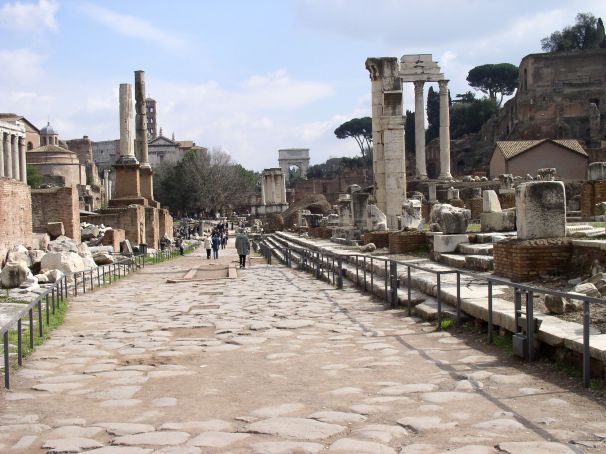
Imagine the number of powerful emperors who graced this road over the centuries. As the main road through the Roman Forum, this connected the important sites and stretched to the Colosseum, which was within walking distance of the Forum. Ceremonies and processions took place along this route, likely lined with huge crowds of onlookers.
The Curia
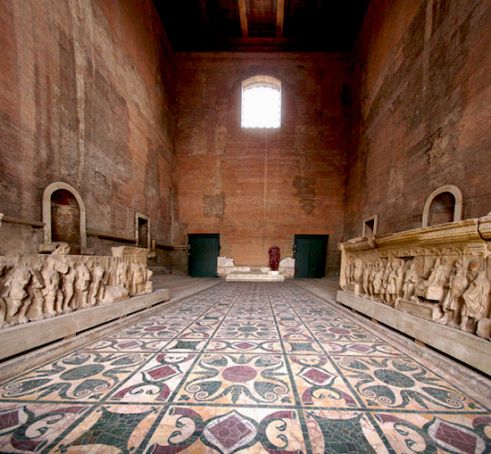
The Curia served as the house of the Roman Senate and hosted political events. The first Curia was located in another part of the Forum. But it burned down and was rebuilt several times, before Julius Caesar ordered a new Curia to be built on its present site. After serving as a seat of political power, the Curia eventually became a church.
Temple of Saturn
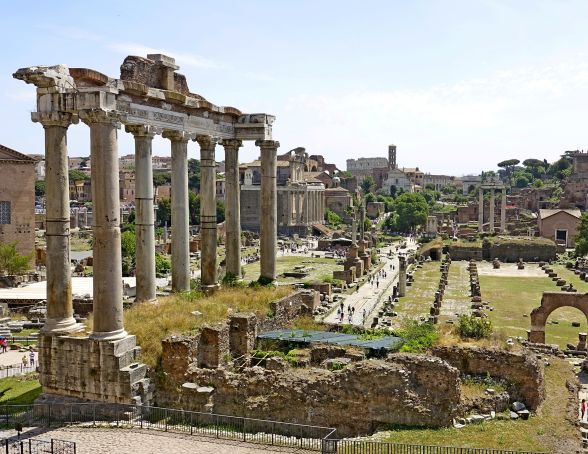
One of the first temples to be built in the Forum and arguably the most imposing and iconic of all the ruins on the site, the original Temple of Saturn is believed to have been built around 498 BC, then completely reconstructed in 42 BC. But the ruins you will see on your visit, at the foot of the Capitoline Hill, are thought to date back to 360 AD when the temple was rebuilt following fire damage. Dedicated to Saturn, the Roman god of agriculture, the temple was used as a treasury, storing Roman reserves of gold and silver.
Arch of Titus
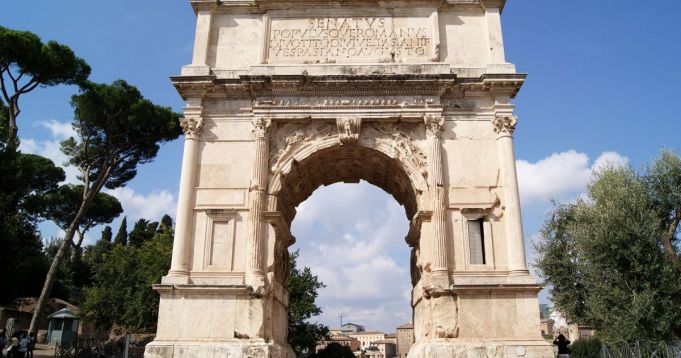
Constructed to honour the emperor Titus and his victory in the Siege of Jerusalem, the Arch of Titus was built on the Via Sacra during the first century, around 81 AD, by his brother Domitian. If it seems familiar, this may be because it served as a general model for other honorific arches built over the course of history, most notably the Arc de Triomphe in Paris. It stands more than 15 metres high and 13 metres wide, with detailed decorative panels depicting the fall of Jerusalem.
Temple of Vesta
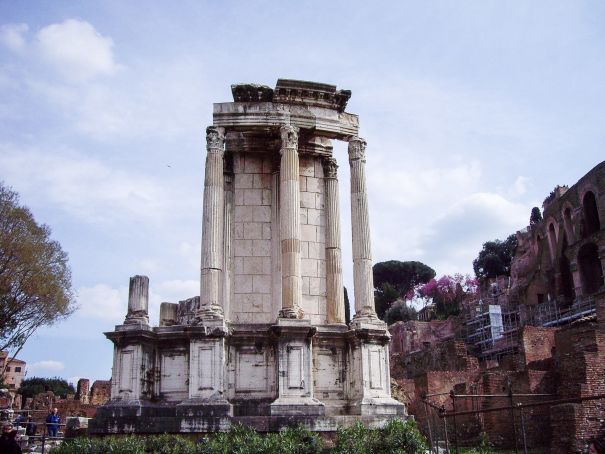
Dedicated to Vesta, the goddess of the hearth and home, this circular-shaped temple housed the sacred fire, symbol of the eternal life of the city. The six Vestal Virgins – a group of esteemed virgin priestesses – were tasked with guarding and tending to the fire, never allowing it to be extinguished. The temple itself caught fire a few times and had to be restored.
The Rostra
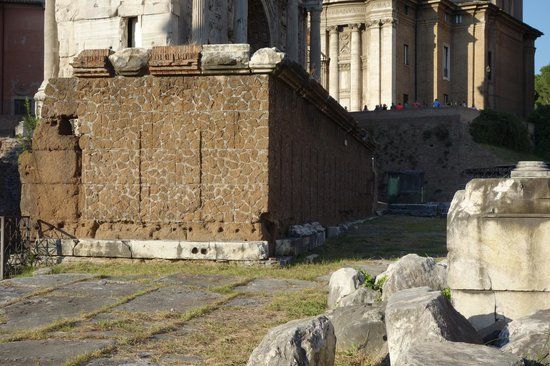
Ancient Romans were big fans of public speaking, so orators of the day greatly enjoyed this platform to give speeches to the masses in the heart of the city. Emperors, for example, addressed their people and welcomed foreign rulers. The speaker’s platform was decorated with the bronze beaks (plows) of ships conquered in the battle of Antium in 338 BC.
Temple of Castor and Pollux
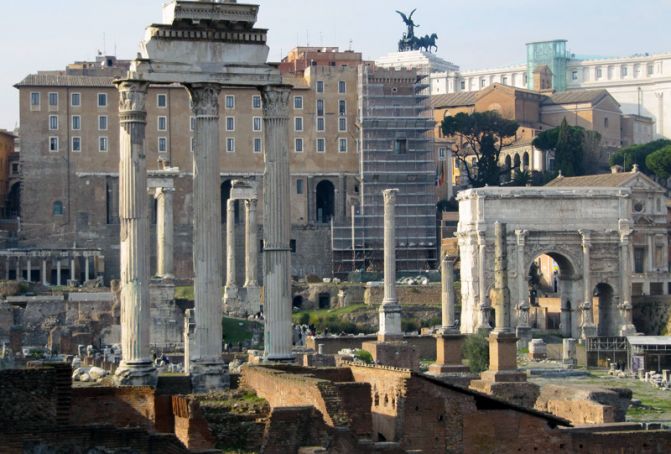
Named after the demi-god twins of Gemini, Castor and Pollux, this temple was built to honour Rome’s great victory in a battle against the Latins. A cavalry parade of 5,000 men was held here every 15 July the temple was the focus of a cavalry parade to commemorate the victory.
Openings:
Every day: 8:30 am until 7 pm
25 December and 1 January: closed
Ticket infromation:
Combined ticket to visit the Colosseum, the Roman Forum and the Palatine:
Adults: 12€
European Union members (18 – 24): 7.50€
Children (ages less than 17) and seniors (over 65) members of the EU: free entrance
General Info
View on Map
Visiting the Roman Forum
Via della Salara Vecchia, 5/6, 00186 Roma RM, Italy

















